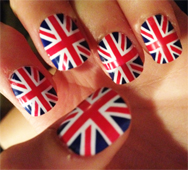Despite the generally challenging economic climate, the U.K. professional beauty market remains among the fastest paced across all European countries. Today’s cautious, more enlightened, and empowered British consumer is demanding more affordable products and better in-store services to complement their beauty regimes and not tax their budgets.
Taking the biggest cut, the hair-care segment continues to keep ahead of the United Kingdom’s professional beauty market with a 65% total market share, generating £370 million (USD 560 million) in sales at the retail level in 2012. However, consumer visits to hair salons continue to decrease, particularly in the lower-end segment.
A particularly strong boom in the number of nail salons is being seen, with many introducing skin care services. The number of popular high street in-store beauty institutes is also progressively increasing. Nail care, although claiming the smallest share of the British professional beauty market, has seen a meteoritic 30% increase in sales through 2012. More readily lending itself to constant innovation and novelty, the professional nail care market has successfully tapped into these advantages and continues to invite faithful consumer spending.
Skin care is another area experiencing growth and, with the second largest professional skin care market in Europe after France, accounts for over 16% of European sales in 2012, the United Kingdom is showing up some particular market tendencies.
What especially differentiates the 2012 British professional skin care market from the Continent is the predominance of the medical care providers channel, which continues to be the best performing channel in the United Kingdom, with sales soaring at nearly 13% – far ahead of the retail stores channel. By contrast, both the beauty institutes and salons and spas channels are seeing slight sales declines.
With approximately 25% of all dispensing physicians in Europe, the United Kingdom has the greatest number of physicians dispensing professional skin care products to consumers. This combined with an increase in the number of medical care providers, particularly with dermatologists and plastic surgeons typically dispensing skin care products within their private consultancies, and with the market enjoying more relaxed oversight compared to Continental Europe, have all contributed to the United Kingdom continuing to be one of the fastest growing markets in the European region.
Reflecting high cultural diversity, as well as a burgeoning minority market, whitening/hyperpigmentation is claiming 11% of take-home face care sales, significantly higher than the European average of 7%. Sales size and growth are primarily driven by the medical care providers channel and an increase in demand from ethnic minorities, particularly from South Asia.
Further powering the British skin beauty is the market for at-home beauty devices. With strong marketing strategies, companies are building up consumer awareness of these products and generating keenness on integrating them into consumers’ at-home beauty regimes.
The U.K. market is currently fragmented, especially in the hair removal segment due to the entrance of the new products filling the void left by the withdrawal of the Cyden brand. Cyden had held 45% of the market share in hair removal devices when it ceased manufacturing at the end of 2011. This has left room for established brands such as Tria and No!No! to set up subsidiaries in the United Kingdom to compete with the new market leader Philips’ Lumia.
These and other insights from the global professional beauty market can be found only with Kline’s in-depth analysis available for countries within the regions of Asia, the Americas, and Europe. Please click here for details.

